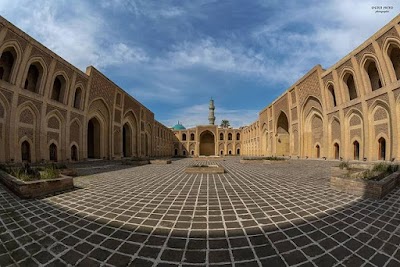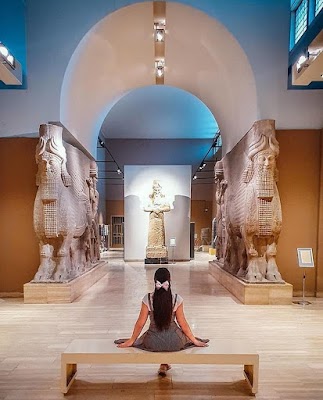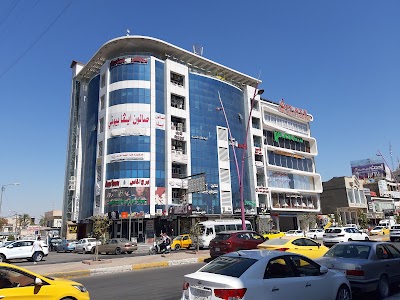Al-Mustansiriya School (المدرسة المستنصرية)
Overview
Al-Mustansiriya School, nestled in the heart of Baghdad, Iraq, is a captivating historical site that provides a fascinating glimpse into the intellectual and architectural achievements of the Islamic Golden Age. Established in 1227 by the Abbasid Caliph Al-Mustansir, from whom it derives its name, this educational institution stands as a testament to the cultural and academic vitality of medieval Baghdad.
The school was a pivotal part of the Islamic world’s educational network, accommodating a diverse student body long before the concept of a modern university emerged in Europe. It served as a hub for teaching various disciplines including theology, law, medicine, mathematics, and literature. Functioning as a madrasa—an educational establishment linked to a mosque—it offered a comprehensive educational experience that was exceptional for its time.
Architecturally, Al-Mustansiriya School is a marvel in itself. It blends traditional Islamic design elements with practical features that catered to the educational needs of its era. The building showcases a large central courtyard surrounded by arched walkways and study halls, creating a serene atmosphere that fosters learning. One of its most striking attributes is the intricate brickwork and stucco decorations, which adorn the walls and ceilings, reflecting the high level of craftsmanship that flourished during the Abbasid period.
Historically, Al-Mustansiriya holds immense significance, symbolizing the zenith of Baghdad’s cultural and intellectual prominence. During its peak, the school was recognized throughout the Islamic world for its substantial contributions to education and knowledge dissemination. Despite facing numerous challenges—including invasions, neglect, and natural calamities—Al-Mustansiriya has remarkably endured, allowing visitors today to step back in time and appreciate the grandeur of this historic institution.
An interesting aspect of the school is its role in fostering scholarly exchange. It attracted scholars from across the Islamic world who both contributed to and benefited from its rich academic environment. The school’s library was one of the most extensive of its time, housing manuscripts and texts across a wide array of subjects. This library played a crucial role as a resource for scholars and has inspired many modern educational practices.
Another fascinating dimension of Al-Mustansiriya School is its ongoing restoration and conservation efforts. In recent years, significant work has been undertaken to preserve its structure and ornate decorations, ensuring that its historical and cultural value is maintained for future generations. These efforts have garnered support from both local and international organizations, underscoring the global appreciation for this iconic landmark.
For tourists visiting Baghdad, Al-Mustansiriya School offers not just a glimpse into the past but also a profound understanding of the city's rich intellectual heritage. Walking through its courtyards and halls, one can almost hear the echoes of students and teachers engaged in scholarly debates and discussions. This experience is both educational and inspirational, allowing visitors to connect with a bygone era of enlightenment and learning.
The school is conveniently located in the historic part of Baghdad, making it easily accessible for tourists exploring other historical sites in the city. Nearby attractions such as the Abbasid Palace and the Murjan Mosque create a cohesive historical narrative that enriches the visitor experience. Al-Mustansiriya School thus serves as a focal point in a broader historical and cultural landscape, showcasing the grandeur of Baghdad during its golden age.
In summary, Al-Mustansiriya School is more than just a historic building; it is a symbol of Baghdad’s illustrious past as a center of learning and culture. Its architectural beauty, historical significance, and the intriguing stories encapsulated within its walls make it an essential destination for any tourist visiting Baghdad. The school continues to inspire and educate, much like it did nearly eight centuries ago, standing as a proud emblem of Iraq's rich cultural heritage.





